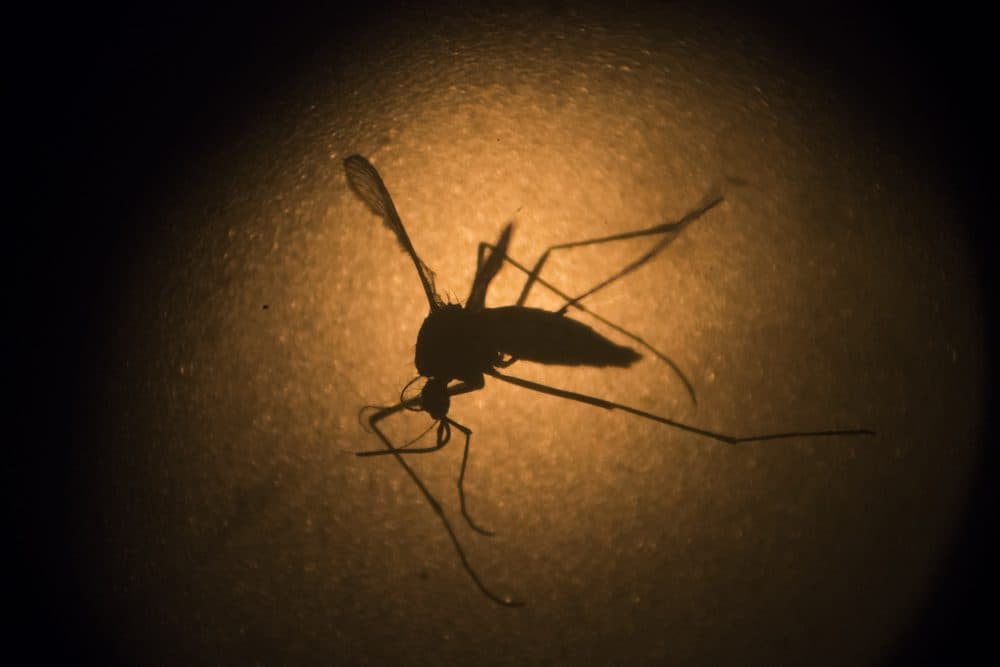Advertisement
Boston-Based Researchers Model The Future Of The Zika Epidemic

A new model based out of Northeastern University predicts that nearly 30,000 Zika virus infections have been imported into the United States as of June. The CDC reported only 1,657 travel associated cases.
But don't panic — at least, not yet.
That's the message from Northeastern University professor of computational sciences Alessandro Vespignani. He and an international team of scientists have built a model to understand how the Zika epidemic will respond in the future.
Their model shouldn’t be taken as certainty, but it is an important piece of the Zika puzzle. Models can help public health officials better understand how a disease and an epidemic work. By continually improving and updating their model, the team hopes to learn how to better predict disease outbreaks, working towards a model that could be as accurate as today’s weather reports, Vespignani said.
Vespignani is quick to point out that the vast majority of Zika cases are completely asymptomatic and harmless — most people don’t even know they have it. About 80 percent of Zika cases have no symptoms and most cases that do have symptoms are very mild, according to Vespignani.
Researchers compared their model to the real world by looking at the number of pregnant women who have entered the U.S. with Zika. Because pregnant women who have traveled to areas known to have Zika are very closely monitored, almost all cases are caught. Pregnant women make up about 1 percent of travelers, so the team estimated a hundred times the number of infected pregnant women (265) have entered the U.S. as of mid-June. That means around 26,500 Zika-carrying travelers entered the U.S., compared with the team’s model that estimated that 29,898 travelers entered the U.S. carrying the virus.
The model also suggests that Zika is a very slow-moving virus and that its spread is highly varied depending on location.
“It took many months to grow to a full epidemic in Brazil and then to move into other countries. So the entire span of the epidemic is, at this point, more than two years," Vespignani said in an interview. He said that's quite different than the flu, for instance, where, "within months, there is global circulation."
Vespignani described the model as a synthetic world that looks at everything from flight patterns to weather to where mosquitoes live. Their synthetic world looks at data in areas as small as fives miles by five miles.
You can look at their data here, where it is broken down by country.
In most of the countries in Latin and South America, including Colombia, the epidemic is declining, Vespignani said, but in other places, like Puerto Rico, "probably things are ramping up at the moment."
Still, there's a lot left to learn about Zika, and this introduces uncertainty into the model.
Vespignani compared it to a weather forecast, which uses real-time satellites and other science to predict what will happen in an hour or a day. Their Zika model runs hundreds of different possible scenarios with different parameters and then takes the statistical average to tease out what the future may hold. The team is constantly looking at new data — and how close their model was to it — in order to readjust and recalibrate.
That’s not the only difference between their model and a weather forecast. “If you predict the path of a hurricane, it doesn’t care. If we predict the path of an epidemic, people will begin to react and act differently. Policymakers will do things so obviously we are part of the system,” Vespignani said.
Vespignani and his team hope to improve the model and also continue to “zoom in” on the US, looking at Zika at a county by county level in some areas of the country. They also want use the model to better understand how often Zika leads to microcephaly. Current estimates, according Vespignani, vary greatly.
Vespignani urged that people interpret the models cautiously, as they are only statistical predictions and said it remains crucial for organizations like the CDC and others to continue to monitor and collect data on the virus.